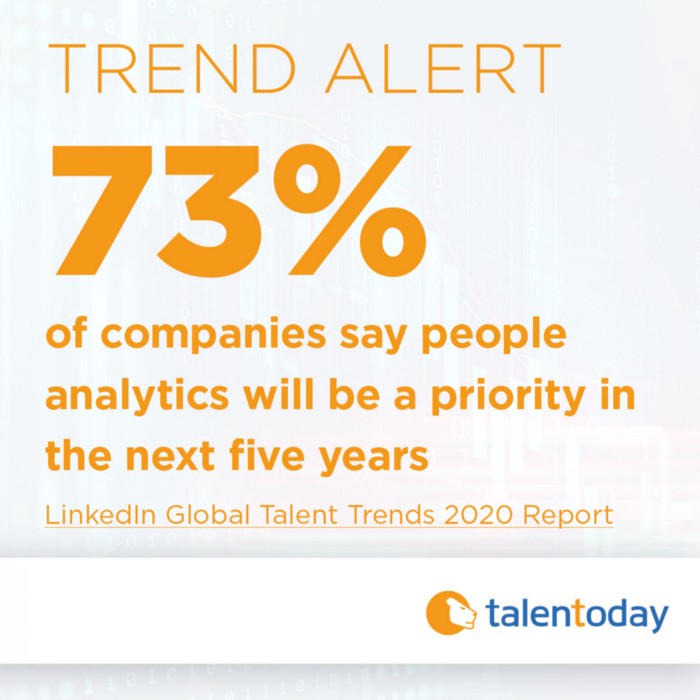Are You Missing the Hard Data on Soft Skills?
More companies are looking at Big Data to boost their bottom line. In the world of work, they are turning to people analytics to provide predictive insights that save time and money, while bringing out the best in their employees. This information can help organizations envision and realize the full potential of their people.
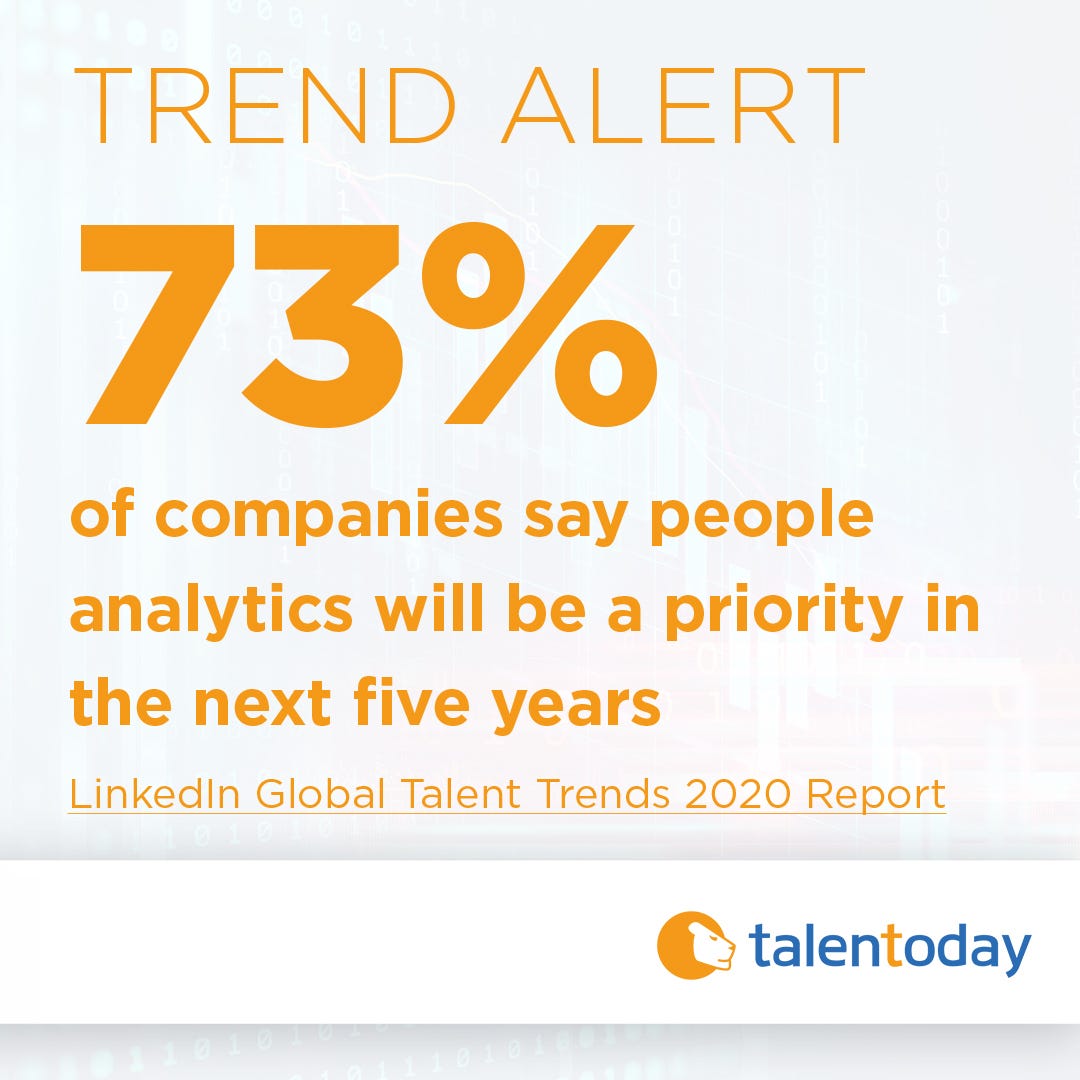
Learn what people analytics software truly means and how to use it to enhance your organization’s growth. A better understanding of the data on soft skills and how it fits into your overall analytics picture can help you align your organization’s goals, values, people, and purpose. It can guide recruitment in finding the right talent to best fit a team and overall organization. Understand the importance of soft skills at every phase of the employee lifecycle:
- RECRUITMENT
- HIRING
- ONBOARDING
- PERFORMANCE
- DEVELOPMENT + TRAINING
Discover how people analytics can help you optimize performance and boost profit, while helping you envision and realize your team’s full potential. Learn ways to enhance your organization’s growth with insights that help you predict and plan. Download our eBook.
Build Your Team Using Soft Skills

In the pandemic-impacted spring of 2020, puzzle sales were up 300% from the year prior¹. I have to admit that I contributed more than my share to that increase in sales; you can only watch so much Netflix before you need to find a new in-home activity!
What I’m trying to say is that I spent a lot of time in front of puzzles this year and I’ve learned one valuable lesson: teams are a lot like puzzles. That is our metaphor for today.
We don’t always know what our missing pieces will look like
When you are looking for the perfect piece for your puzzle you might have the exact picture of what you are looking for in your head. You know what the surrounding pieces look like (what their strengths are) and you just need to find the piece that looks like those ones. The problem with putting too many constraints on what we want is that oftentimes as human beings we’re wrong. Although there might be certain characteristics that we know we need for a position, that doesn’t mean that we know all of the important aspects.

When interviewing candidates, it might seem like we know exactly what soft skills are needed for success. After all, why wouldn’t you just find someone who looks just like your top performers? To start, there are a lot of positions where two opposing traits can come in handy! Someone who is extroverted can be just as successful in a position as someone who is introverted. Same goes for people who are patient versus being eager, or imaginative versus practical. That brings us to our next point — similarities and differences.
Some pieces look similar, but the differences in pieces are what create the whole picture
When every person on your team thinks exactly the same way, you lose something very important in teamwork: Diversity of Thought². When hearing this term you might automatically think of gender, race, background, or age. While all of these things are important, another aspect of diversity can come in when looking at — that’s right — soft skills.
When teams are collaborating on a project there are aspects of their personality or motivations that can be helpful to have similarities in. However, if you have a team full of extroverted people, you might find it hard to get on track. If your team is full of big picture thinkers, you might find yourself with a lot of ideas and not a lot of action items. If everyone on the team is very precise, you might end up spending more time on the details than necessary. Find the gaps in your team and keep that in mind when you are looking for new people to join your organization.
Each piece is unique and has a place, even if it’s not where you originally thought
Let’s say you hire an individual who you thought was the perfect fit for a team and they’re not doing quite as well as you thought. Before giving up on that person take some time to get to know their soft skills. What are their personality strengths? Are you utilizing these strengths in their position? Do these strengths have a place in their current position in the team? What motivates this person? Are you fulfilling those motivations as a manager or teammate, or is their work fulfilling those motivations?
See if there is another place where that individual can thrive, even if there are some skill gaps to address. People are the most important asset to an organization³ so before getting rid of a good hire, see if they were just in the wrong position.
Once your pieces are where they belong, you can create something amazing!
Every person is unique. Even when there are shared qualities within a team nobody thinks, is motivated, or behaves in the exact same way. Those differences are what make a team stronger, more creative, and ready to tackle whatever challenges they might face!
Using MyPrint® to put together your team
For more ways to understand your team’s soft skills on an individual and group level, check out our MyPrint® assessment and keep reading to learn more about some of our features included in the Talentobe Manager platform!
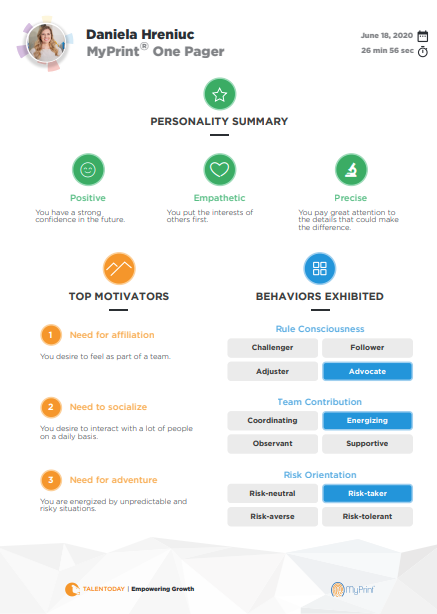
One Pager: Use this one page summary of an individual’s results to see their top 3 personality strengths, top 3 motivators, and 3 most prominent professional behaviors.
Premium Report: This 20+ page report gives in depth information about every personality and motivation dimension that is measured in the MyPrint® assessment, including strengths and tips to working with that individual. Additional information about the 11 professional behaviors are included, along with suggested interview questions to help you go more in depth when getting to know someone!
Collaboration Report: View two individuals’ most similar and different personality traits, as well as top motivators and behavior synergies in a side-by-side comparison.
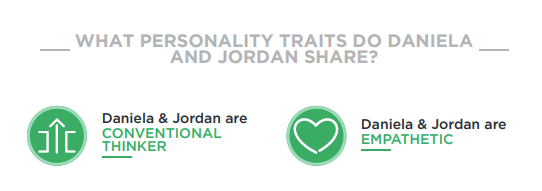

Target Profiles: Use pre-made templates or create your own target profile to see where your team has similarities. From there you can determine if these traits are beneficial to the position, or use this tool to determine the soft skill gaps in your team!
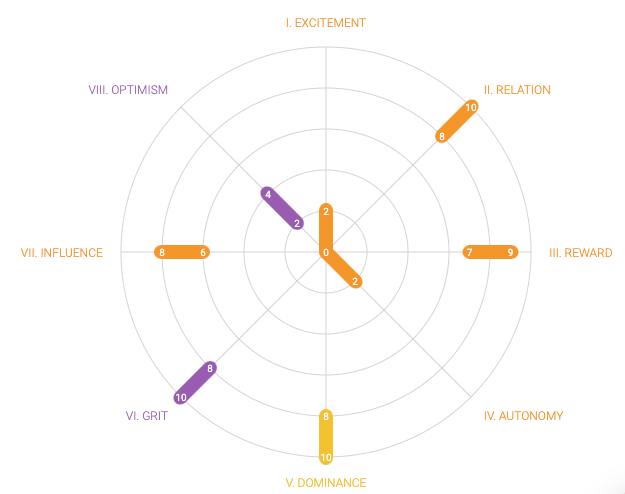
Stay tuned for some new, exciting features in 2021! Get more insights on your team as a whole on all personality and motivation dimensions, as well as understanding how individuals’ behaviors synergize with one another.
Looking for additional resources and support? Email Talentobe at customer@talentobe.com to learn more about our assessment and services!
Sources
²https://www.businessinsider.com/the-future-of-workplace-diversity-is-here-2013-9
Closing the Skill Gap & Optimizing Your Workforce
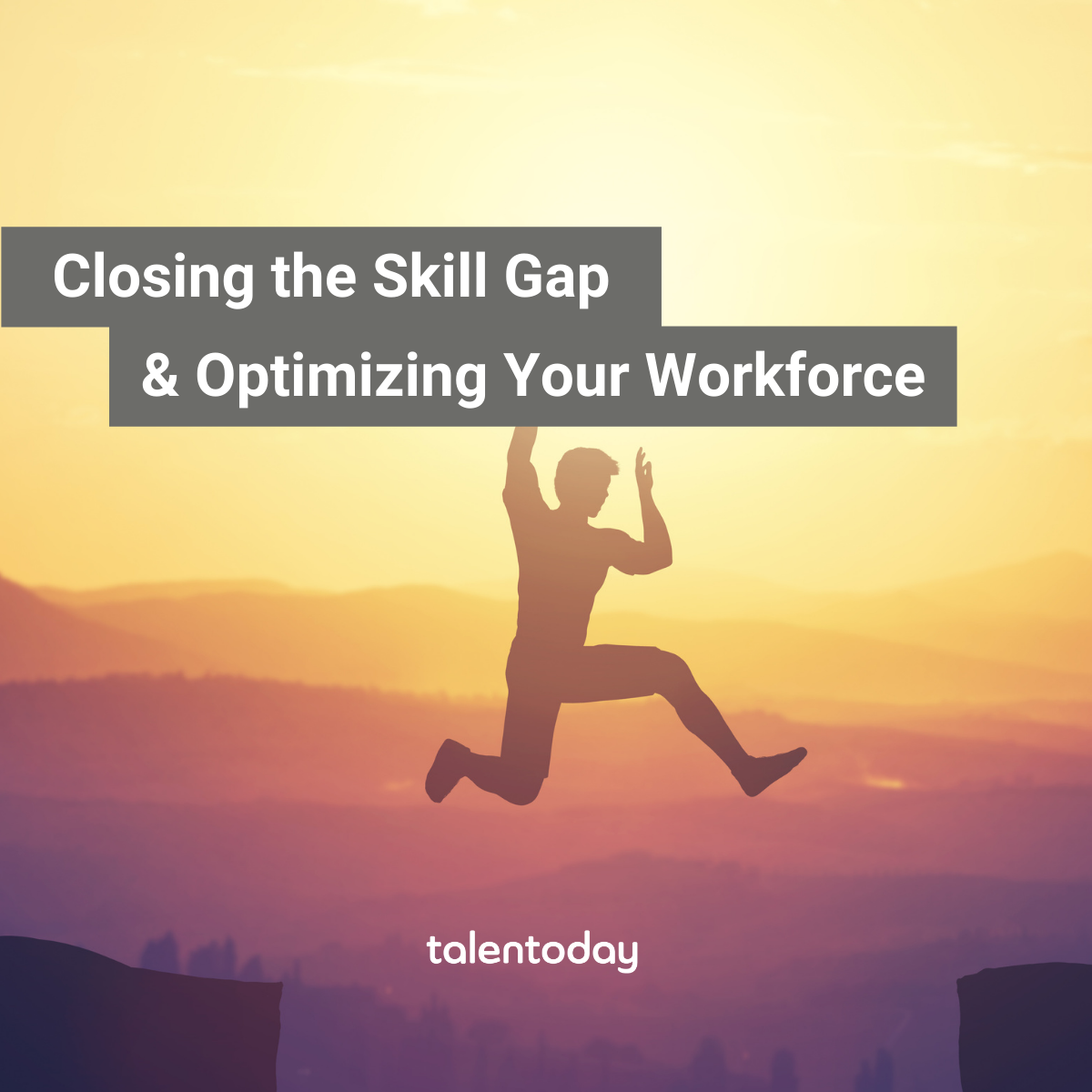
We can all agree that the only constant is change, right? For example, look at your life 6 months ago and compare it to now. Pretty different, isn’t it? Okay, maybe that’s not a fair example because of the whole “global pandemic thing”; but pandemic aside, things are constantly evolving in all aspects of our lives. Your phone software is continuously being updated even if you have the same phone. Fast food restaurants are using touch screens to place orders. Every new model of car has a button that does something our cars didn’t do before. We wear masks to go to the grocery store and we are all finally getting the personal space we desire (let’s be honest, we can’t really push the whole pandemic thing aside).
It might seem like technology is taking over the world, but remember that behind every new technology are the humans that created it. We shouldn’t be competing with technology but rather learning how to coexist with it. Using technology to improve our processes and harnessing our human power in more efficient and effective ways is how we will beat the robots! (…and stay ahead of the skill gaps!)
Internal Mobility
Before we get too far into this blog post, I want to make sure we’re all on the same page about Internal Mobility. This is when an organization is recruiting for positions within their current workforce¹. For example, if there is a need for a new position within an organization or if someone leaves their role then the candidate pool would come from individuals already working at that organization. There are so many benefits to Internal Mobility, both economical and cultural. I suggest you check out the webinar recording for that!
“But what if the new role requires skills that nobody else in the organization possesses?”
That’s what our blog post is really about today: closing those skill gaps!
Upskilling and Reskilling
Upskilling is used when you are taking the skills that a person already has and improving on those skills². A great example of this is technology. Although someone might be proficient in Microsoft Excel, for example, they could go through courses that help them utilize more tools and functions in Excel that they did not know about before. When upskilling an individual within an organization, the goal is to keep them in their same position while improving their performance and adapting to changes within their environment.
Reskilling on the other hand deals with teaching an individual completely new skills². These can be hard or soft skills, and the goal is to provide an employee with the tools needed to move into a brand new position.
How do soft skills play a role in this?
As you know we are all about soft skills here at Talentobe! If you thought we were going to have a blog post that didn’t mention soft skills then you, my friend, were very wrong. Did you know that 94% of employers consider soft skills to be a key element of success in the workplace?³. This isn’t to say that hard skills are not important — just that we’re going to focus on our soft skills today.
Think about your current position. What was it that got you that role? It might be your education, your knowledge of a specific technology or product, or maybe your prior years of experience. Now think about what makes you successful in your role. These are probably going to be your soft skills: your ability to communicate, think critically, pay attention to details, or make decisions. This is why soft skills are so important; they play a huge role in one’s success in the workplace, and they sometimes go unnoticed!
Target Profiles
Assessing your workforce is the best way to keep up to date with the skills that you currently possess and also the skills that you need growth in. Our MyPrint assessment and Talentobe Manager platform are a great way to assess and visualize your workforce’s soft skills.
Within the Talentobe Manager platform we have a Target Profile feature to help visualize the 8 most distinct personality and motivation traits for a group of individuals. This can be a custom group of people or based around a single job title or function. Below is what the Target Profile for Sales looks like, which is one of the Target Profiles that is built into the Talentobe platform.
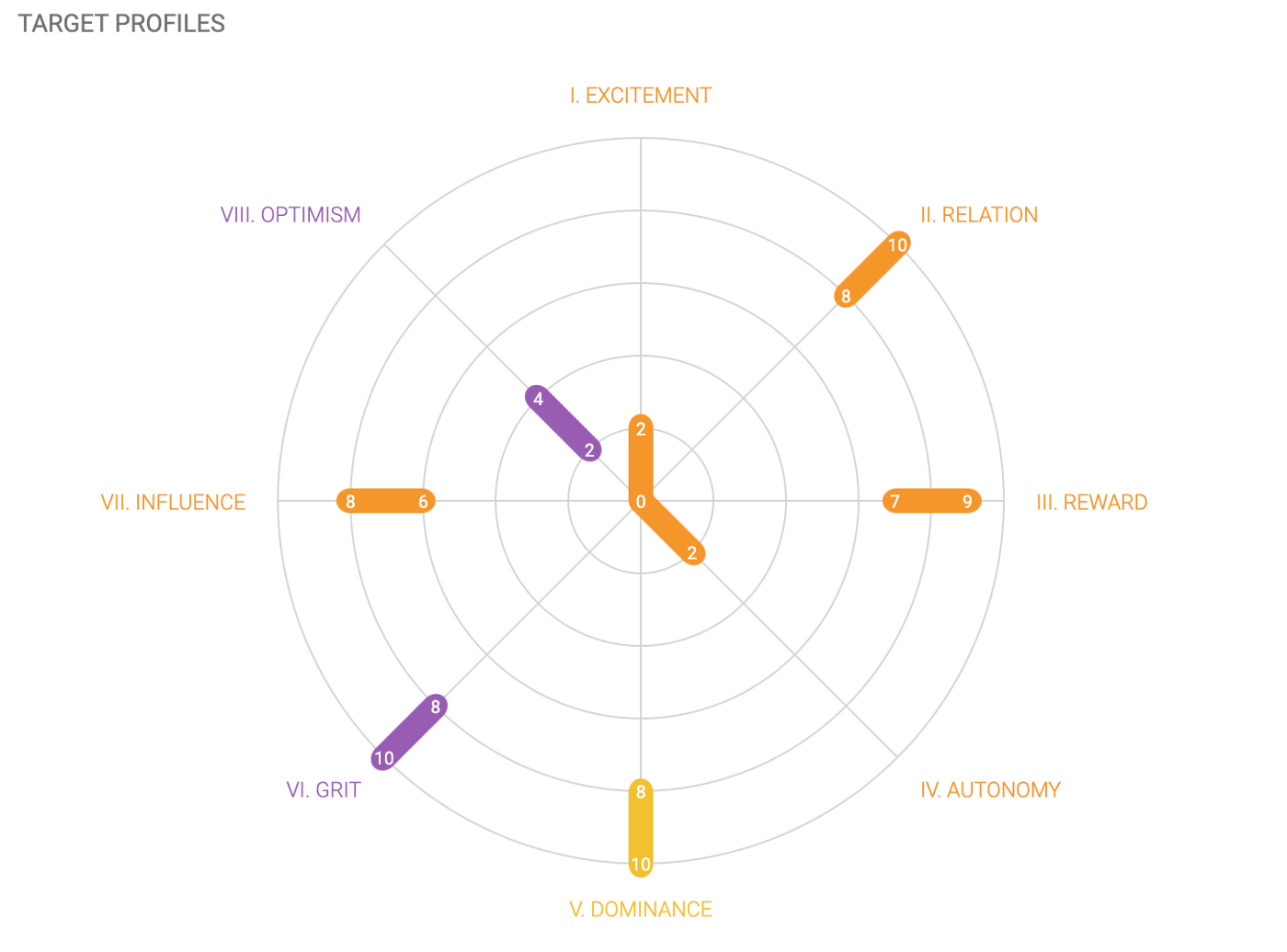
Now let’s put this to use — let’s say that I wanted to move into a Sales role. We could then match up my MyPrint results on top of the Target Profile for Sales to see the areas where I have the biggest gaps.

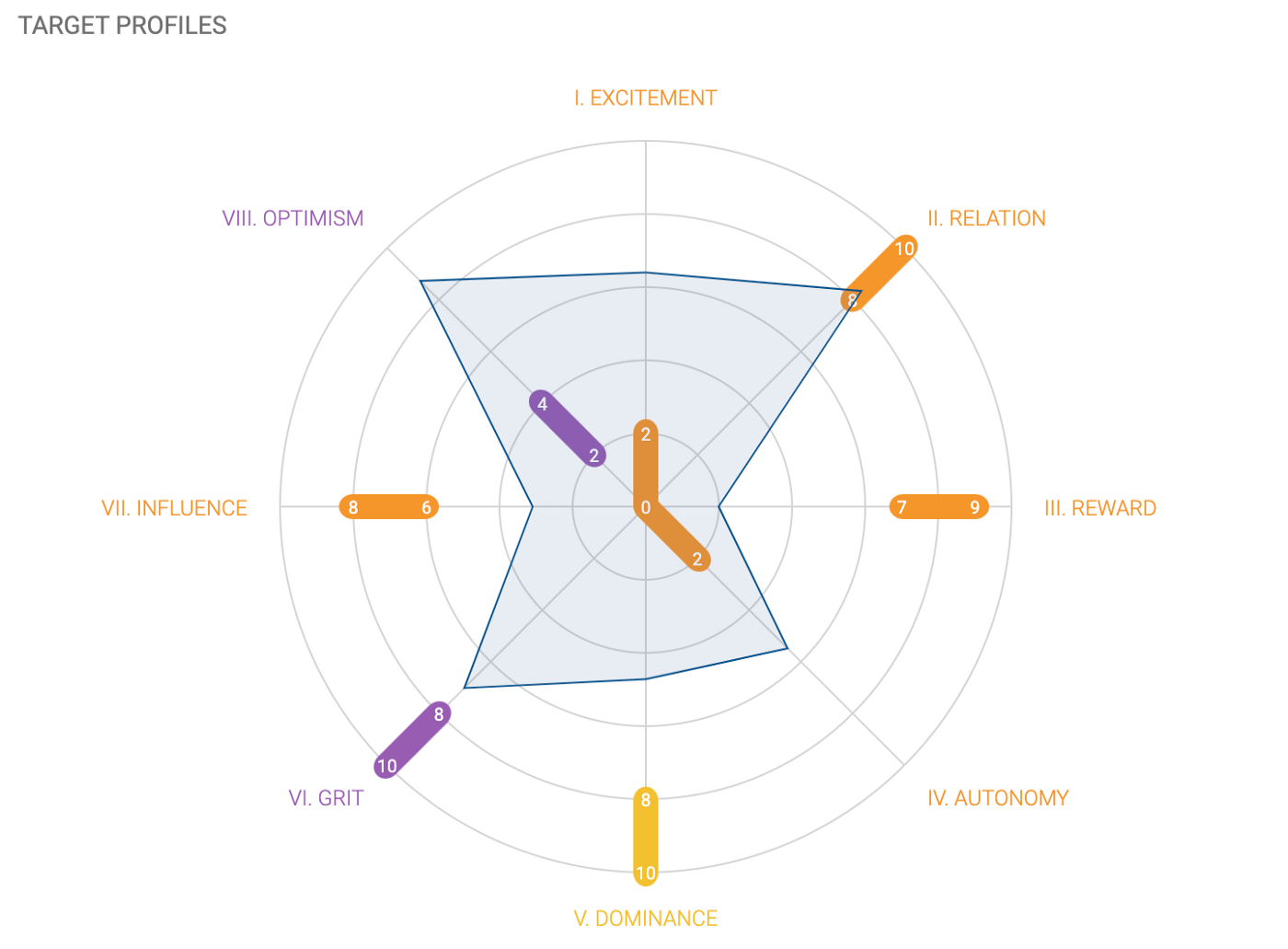
Right away we can see that I am a 47% match for a Sales profile. Does this mean that you should lose all hope in my ability to be a sales person? Not at all! This Target Profile should be screaming opportunity at you! One area of concern would be that I am very high on Optimism (shocker, I know). Knowing this, I would probably need some training on when, where, and how to use my positivity. I wouldn’t make any sales if I responded to clients’ concerns with “It’s fine, everyone experiences bumps in the road! You are still profiting though so you are doing great!” (Sorry to all of the sales people out there who just panicked a little bit).
When an employee is moving into a new role it is key to understand what skills they possess, as well as the talent gaps they need to fill, in order to set them up for success. Just because someone isn’t a 100% match for a new position does not mean that they are a lost cause. People are capable of learning and growing not only with their hard skills, but with soft skills as well!
In conclusion…
Technology is taking over the world. Okay, maybe not completely. Technology is constantly changing though, and with that comes a change in our workforce. By understanding the skills that your workforce currently possesses you can stay on top of the skill gaps that are sure to come your way. By investing in your people, you will be able to optimize your workforce to be the most successful that they can be!
If you’d like to view our webinar on Upskilling and Optimizing Your Workforce, or if you’d like more information about Talentobe, please visit www.talentoday.com or contact our experts at contact@talentobe.com.
Sources
1 Whelan, P. (2019). Why internal mobility is key to building the workforce of the future. HR Technologist. https://www.hrtechnologist.com/articles/recruitment-onboarding/why-internal-mobility-is-key-to-building-the-workforce-of-the-future/
2Agrawal, S., Poplawski, P., Reich, A., & De Smet, A. (2020). Beyond hiring: How companies are reskilling to address talent gaps. McKinsey & Company. https://www.mckinsey.com/business-functions/organization/our-insights/beyond-hiring-how-companies-are-reskilling-to-address-talent-gaps
3Chelovechkov, A., Lefkowitz, R., Spar, B., & Van Nuys, A (2019). 2019 Workplace Learning Report. LinkedIn Learning.
Be Unique: One Size Does Not Fit All

The idea of the “employer brand” is becoming exhausted with a flurry of best practices and standards, but we believe the exhaustion relates to companies being out of touch with what employees are really experiencing. Today there is a need for a holistic and authentic approach across the company’s brand, as the company’s employer brand is central to attracting talent and retaining employees. So, how do we bring new life to the “employer brand” at a time when social interaction is being digitized? What if restoring human relationships was the solution?
By returning to its core values, and purpose, companies can start a new foundation and ensure that it’s attracting talent that match its unique company culture. This fact has been a compressed reality for so long that, in France, the Pacte Law has been enacted to help with the transformative challenges and mutations that companies are facing by emphasizing on the corporate social responsibility (CSR) through the introduction of a new moral pact between a company and its social and environmental ecosystem. QED
Distinctiveness is the lasting differentiation
It is therefore vital for companies to reconnect with their ecosystem by working on identifying what makes them unique and what makes their team(s) exceptional. Through reconnecting with their ecosystem, companies will be able to identify their distinctive image and identity. Which will help them to transparently communicate their authentic purpose and true holistic employee experience — attracting and retaining the right people who share their values and integrate into their sub-culture.
Human Centricity
Given the importance of company culture, and how today it is becoming central in human resource strategy, we’re seeing a number of recruiters utilize soft skills (skills related to interpersonal behaviors) when screening and shortlisting candidates. In fact, by shifting their focus to soft skills, companies get the opportunity to revisit their own values and create that distinctive, strong, social and moral pact that candidates can identify with and employees feel empowered by.
Developing a “People Skills” Directory
Each company is unique, each profession is unique, and the chemistry of the employees is unique.One the many ways to achieve coherence and that goal of distinctiveness is the creation of people skills Directory. An index that list employee behaviors which is intrinsically what makes a company’s culture unique. Conclusions can be used to create that authentic employer brand while evolving overtime based on employee feedback.
To attract the right candidates, foster engagement and retain employees, HR professionals can use elements of their company culture to answer the questions “which projects will naturally speak to employees?” and “on which projects will individuals naturally perform well?” to bridge the gap between employee values and the company’s goals. Ultimately, this will allow companies to create a healthy and remarkable work environment, a strong social pact, a strong culture, and a structural — sustainable — economic growth.
Personality is the catalyst for career performance.

Personality at work has never been more important. More and more recruiters are using personality assessments to evaluate candidates for hiring and job placement.
Although personality represents a small portion of what we’re like at work, it is the catalyst that leads to positive outcomes within an organization in the long run. Afterall, happy employees are motivated employees that drive success to a company.
Understanding a person’s natural specific traits and behaviors at work is essential for two reasons:
- First, it can predict how the individual will interact and behave with others in a group or team.
- Second, personality data identifies whether the individual fits with the tasks and responsibilities required for the position.
Consider traits such as communication and decision-making — for example. Both crucial performance elements for understanding and predicting work performance at an individual and organizational level.
Let’s take a closer look at the two traits mentioned:
Communication
We all know that communication is very important. And spending 8+ hours a day with coworkers certainly requires great communication skills.
A recurring problem we see in recruitment these days is recruiters heavily relying on resumes to screen candidates. Meanwhile, candidates are attempting to convince recruiters of soft skills they do not actually possess. Some will go out of their way to say that that they are “fantastic communicators” simply because they want the job… uh-oh!
So now what? Recruiters are finding that experience and education do not determine the way employees communicate with each other — but in fact, their personalities.Communication is a fundamental element in coworker relationships. The ability to express and communicate can make or break a team.Therefore knowing and understanding the traits and behaviors that form a candidate’s character is essential for predicting how he or she will interact and behave with others in the long term.
Decision making
Personality plays a huge role in the decision making process. Many of us are aware that there are multiple ways to make decisions. From a logical point of view, a decision should be made based on a high potential of achieving success. Yet this is not always the case, as decisions could be colored by a person’s values and motivations. For example, a daring and adventurous employee, may be quick and even impulsive in making decisions. While on the contrary, an analytical employee may need to contemplate every angle before weighing in on a decision.
Hence, organizations are beginning to recognize the importance of personality when looking for candidates to fill job openings. Different roles require different skill sets and aptitudes, and most certainly different personalities. Not everyone is meant to be in leadership position; not everyone has the grit to be a customer contact; and not everyone has the drive to hit sales quotas.
Research studies show that the relationship between personality traits and job performance, using data from tens of thousands of employees significantly predict job performance (Barrick & Mount, 1991). To add, some jobs more than others are sensitive to the affect personality has on performance. Those jobs include positions in sales, customer service and leadership.
Therefore, paying attention to personality traits and motivation drivers is not only prudent but mandatory when hiring or developing talent. Matching the right personality along with the right skills to each job is as important as evaluating a person’s training and hard skills set off of a resume.
By identifying individuals who have a matched personality profile to a job, sourcing becomes simpler.
Try screening employees within your company and select someone that has the soft skills to get the job done right and can be trained to acquire the hard skills. You may be surprised and discover potential high performance sales professionals that are hiding in your organization; and personality assessment tools will help you identify them!
Curious to find out if your candidates have the right personality traits for the job? Start your free trial today and test your candidate quickly & effectively for free!
Top 3 worldwide recruiting trends in 2017

We recently hosted Silicon Valley Recruiters Association (SVRA) at our San Francisco office. The highlight was the panel of 6 experts who spoke about the top problems recruiters face, the importance of data driven soft skills analysis, and the overall trends they foresee for recruiting in 2017 and beyond. Watch the full replay here.
Today we will be featuring the insights of panelist Sankar Venkatraman who has been the Group Product Marketing Manager at LinkedIn for the last five years.
Venkatraman presented data from LinkedIn’s 2017 Annual Global Recruiting Trends Report in which over 4,000 recruiters spanning 35 countries were interviewed about challenges they face, the trends that will define the future of recruiting, how they spend their budgets and where they would like to invest in the future.
Biggest Challenge Recruiters Face: Competition for Talent
According to LinkedIn, by far the greatest challenge recruiters face is competition for talent. Venkatraman simply described this as “how do I stand out in the workplace?” He talked about how he believes LinkedIn initially created this problem because it made it very easy for people to source and find people. The problem is no longer “how do I find a java engineer” but “how do I make it clear that my company is the best place for this java engineer?” He made an interesting connection between this problem and a future trend of recruiting, soft skills, connecting the dots of problem and potential solution, stating that “Talentobe is in the right space for the upcoming 5 years”. Understanding and valuing a candidate’s soft skills and professional motivators will be more important than ever when placing people in the right jobs.
Top Trends that Define the Future of Recruiting
In addition to the biggest challenges recruiters will face, Venkatraman walked us through the top trends projected by LinkedIn. He focused much of his attention on automation. The data shows that recruiters report limited headcount and budget yet hiring demands are growing. Let’s take a closer look at the top three trends you can expect to see in the next 5 years of recruiting.
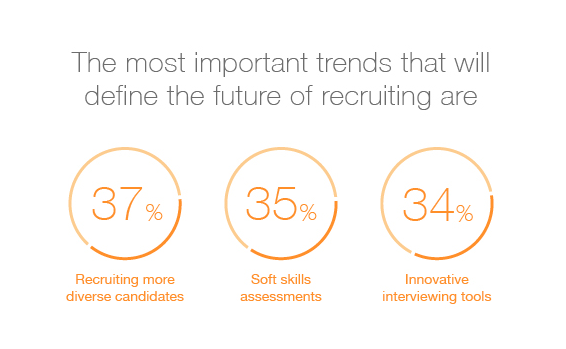
1. Diversity of Candidates
Not only does hiring diverse candidates boost innovation and creativity in the workplace, but by focusing on diversity over time, recruiting success is increased. As we mentioned earlier, competition is the greatest challenge we face as recruiters, and research indicates that diversity attracts talent. According to a Glassdoor survey, two-thirds of people value diversity as important when deciding where to work, the numbers increasing up to 89% of minority job seekers.
It is important to implement this now as it takes time to build a diverse workforce; culture doesn’t pop up overnight. Having a diverse set of employees can also help decrease turnover rates. The same Glassdoor survey said the majority of people wish their employers were doing more to foster diversity — don’t let lack of diversity be the reason your talent is walking out the door early.
*We will be doing a follow up blog with more tips and tricks on how to recruit a diverse population as other panelists went into this in detail, stay tuned!
2. Soft Skills Assessment
When talking trends, soft skills assessment paired with automation were the meat and potatoes of Venkatraman’s presentation. He started by stating the obvious — recruiters are busy. Their teams typically aren’t growing while other teams at their companies’ are. What does this mean for recruiting trends? In this conversation, it boiled down to the screening process. Recruiters need less “noise”. According to Venkatraman, it’s not about how many applicants you have but how many quality applicants you have. Data can help reduce the workload of recruiters and narrow down the quantity of resumes to fewer quality candidates.
There are two main ways that data can help with screening. The more obvious being automated screening which we will get to next in our third vtrend, innovative interviewing tools. The second is that automation can offer a more precise soft skills assessment.
Understanding the hard skills of an individual is pretty straight forward. They have the skill, or they do not. But what is more important these days is an individual’s ability to learn. You can teach someone to code in Javascript but you cannot teach them to have a strong work ethic, how to lead or how to be creative. These are innate traits that are formed over the course of a lifetime, traits that would be nice to know about when hiring for your company. The future, as Venkatraman mentioned will rest on assessments that allow you to measure these traits quickly yet thoroughly.
3. Innovative Interviewing Tools
The other piece to the automation process is innovative interviewing tools. As we mentioned, automation is key. Venkatraman stated how it is imperative for efficiency that recruiters are not screening through millions of candidates for a single job. Automation brings speed and also minimizes human bias which may increase diversity (see how these are all related). Utilizing platforms like HireRight to automate background checks or Hireart to preform video screening of candidates are just a few examples of the tools out there to help simplify interview success.
To summarize, large companies will be focusing on big data to help them attract the most diverse and best talent in the future of recruiting. If you would like to watch the interview with Sankar Venkatraman or the full panel of talent speakers, you can watch here. Stay tuned for more blogs on the other panelists.
— Talentobe
Want valuable insights on your top recruits ? Start your free trial today and use predictive analytics and psychology to make smart hiring decisions. And if you like this post, please hit the ❤️ button below or give me a shout on Twitter.
Put more money in your wallet $$
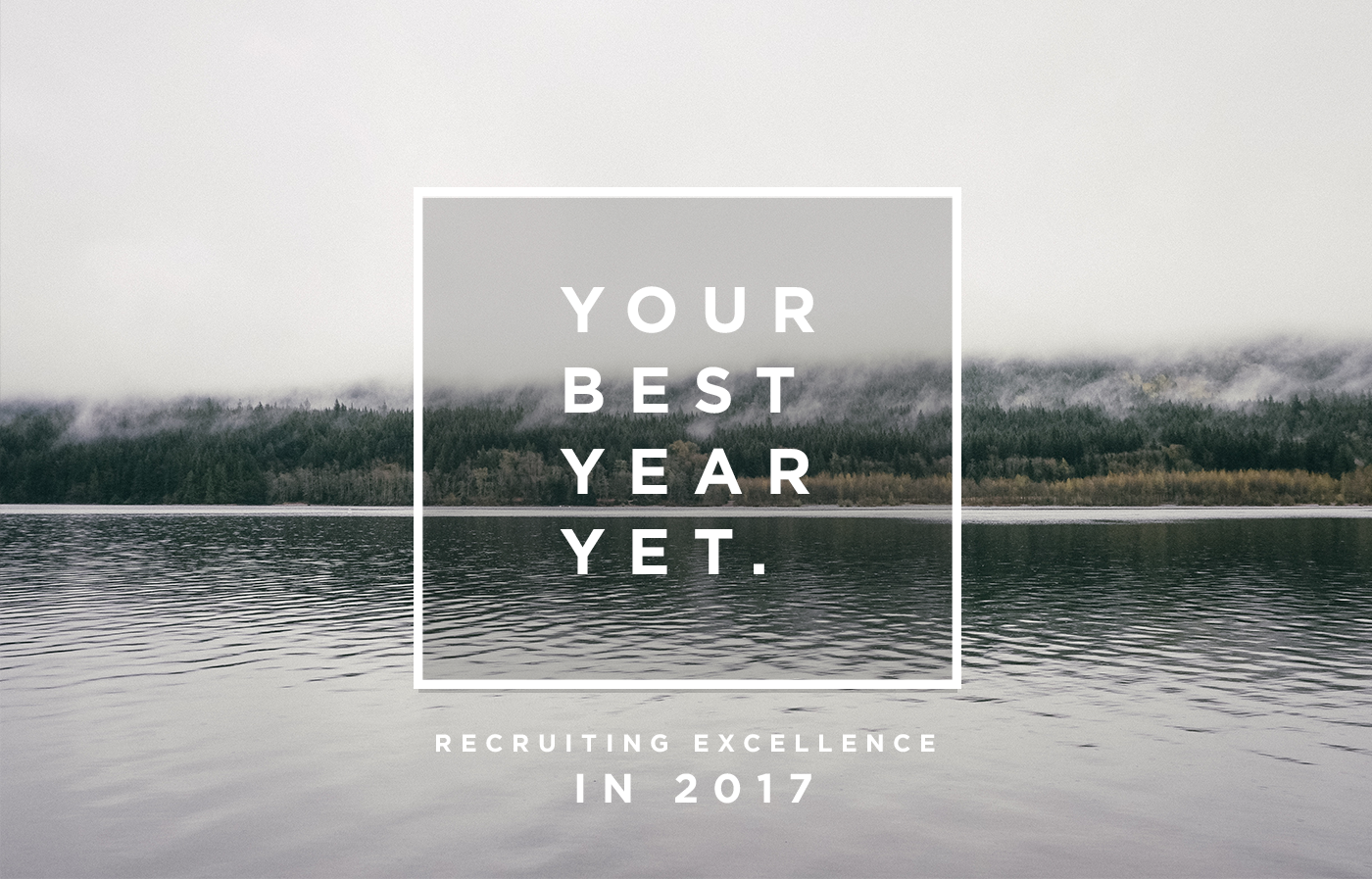
How to Narrow the Qualified Candidate Pool and Increase Millennial Retention Rates
There are two simple ways to increase your commission as a recruiter. One, place more candidates. Two, increase candidate retention rates. While you may have heard these before, what you have not heard are the following secrets to actually put the money in your wallet. So, let’s dig in.
Place more candidates by talking to less of them.
I know what you’re thinking, there is only so much time in the day, so placing more candidates seems impossible with the workload you’re already carrying with your current volume of candidates. The biggest issue with recruiting productivity is that we are talking to far too many candidates on a surface level. A study done by Deloitte on US spending in recruiting stated it takes an average of 52 days to fill an open position, up from 48 days in 2011. The issue we are facing is that hundreds of qualified candidates are applying to several jobs with a few clicks from their laptops at home. On average, each corporate job opening attracts 250 resumes. Of these candidates, four to six will be called for an interview and only one will be offered the job.
The way that candidates automate their job hunt with job databases is matched with a lack of automation on the recruiting side — hence the backup. It’s no surprise that 90% of recruiters say the market is candidate-driven in 2015, up from 54% in the second half of 2011.
It’s easy enough to talk to less candidates, but the fears arise — how do I know if I’m leaving a qualified candidate behind? How do I get a read on candidate soft skills without some sort of interview? Would you believe me if I told you these processes are becoming automated? Companies such as Talentobe, a people analytics solution, provide an automated personality test that is backed by data science and psychology to help you weed through your pile of 250+ candidate applications. They provide you with a job fit percentage that helps you quickly determine which candidates are most compatible with the job you are seeking to fill based on soft skills. Go ahead and re-read that, I did indeed say soft skills!
They do this with their speedy yet effective personality test. It will drastically narrow your candidate pool by comparing candidates against a job profile that you create online. Quality time with fewer qualified candidates means dollar signs on your end.
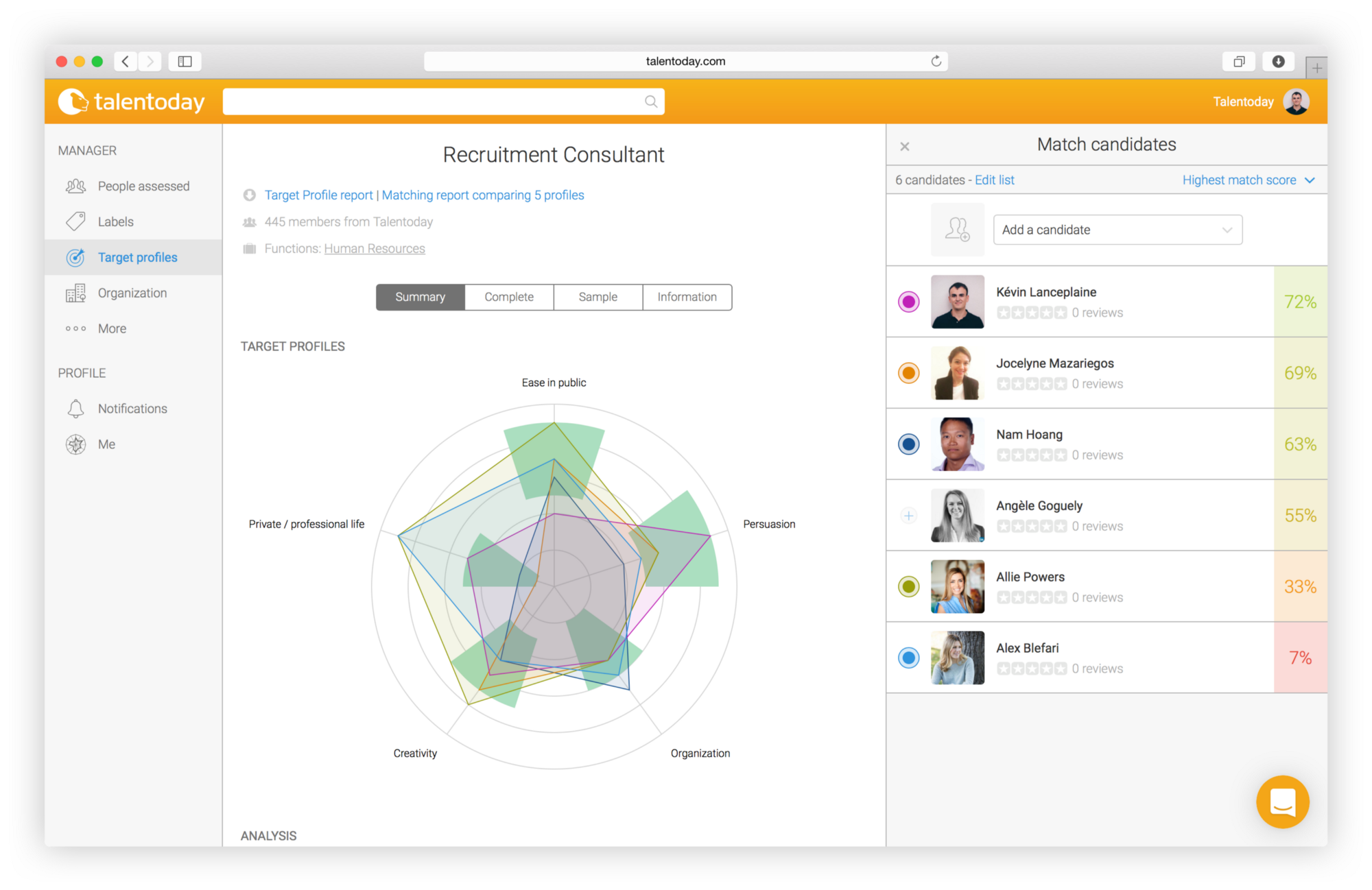
Finally, something to even the playing field for recruiters in response to the surge of applicants! So what to do with all this extra time… well, you can finally get back to talking to the people who are truly interested and equipped for the position. Another important plus is you now have room to take a extra time to coach your candidates into retention, because nothing is worse than doing all of the work to get someone in the job to find out they left and see that commission refunded.
Increase retention by coaching your millennial candidates on how to ask for what they want.
If you aren’t already, you are bound to be working with a majority of millennials and this generation has no problem leaving jobs, unlike their baby boomer parents. Most Baby Boomers (41%) said workers should stay with an employer at least five years before looking for a new job — only 13% of Millennials agreed.
So let’s get to know our millennial audience and what they want. Here are a few facts from Glassdoor:
- Nearly 80% of Millennials look for people and culture fit with employers, followed by career potential. (Collegefeed, March 2014)
- 64% of Millennials would rather make $40K a year at a job they love, than $100K a year at a job they think is boring. (The Columbus Dispatch, Study Conducted by the Intelligence Group, 2014)
- 46% of Millennials left their last job due to lack of career growth. (Glassdoor survey, March 2013)
What is the theme here? POTENTIAL and GROWTH! Millennials are young and starry-eyed. They think they can have their dream career and they will keep moving until they are happy.
So how do we get them to stay? The first step is understanding how they are motivated. If you end up using a tool like Talentobe they provide you with a complete motivations radar that will give you an inside look on what makes your candidate tick. You can then encourage your millennial candidates to have conversations with their managers about growth within the company.
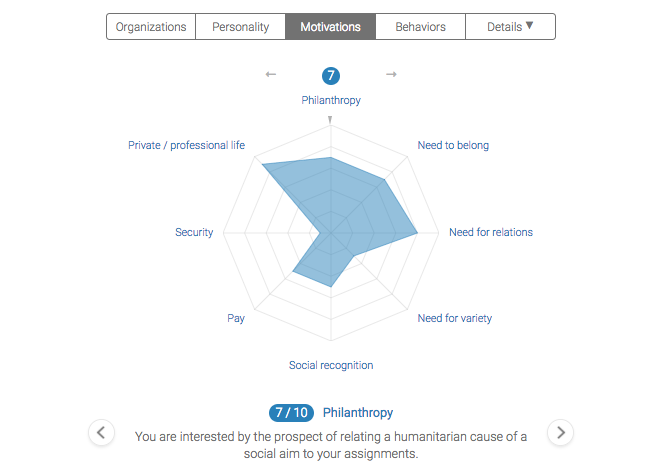
Tell them that instead of “peacing-out” of the job because they are bored or unhappy, to ask for things that keep them motivate them to come into work in the morning. Drive home that candidates should not be afraid to ask for what they want in the job they are in whether that be pay, flex time off or the ability to work from home. Not only will they possibly stay longer at their job, but they will love you as their recruiter for giving them some much needed career success advice!
Curious to find out if your candidates have what it takes? Start your free trial today and test your candidates quickly & effectively for free!
Let’s face it, recruiting can be difficult. Let us help. Check out our other posts about hiring trends, tips and tricks.
Target Profiles with labels
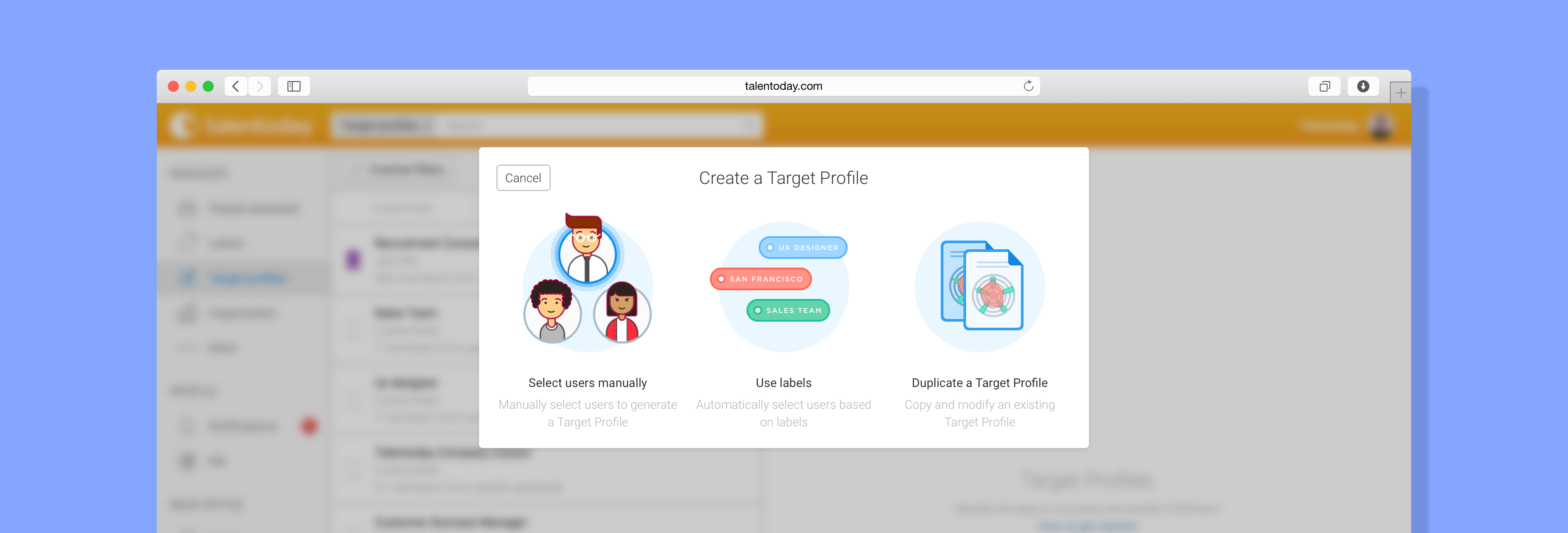
As our Target Profiles evolve, so does the flow we use to create it. Talentobe Managers are now able to assign labels to groups of people, allowing them to easily create Target Profiles and match candidates to those profiles. When our customers expressed interest in quickly assessing high volumes of individuals we responded with a workflow that is fluid, fast and completely user friendly. So what does all this mean? Well, it means your job just got a whole lot easier.
Here is how it works:
1. Invite candidates
You can invite up to 500 candidates at a time to take the personality assessment. Just copy and paste from excel and the invitation to take the test is sent in just on click.
2. Label candidates
Once you have invited individuals to take the personality assessment, you are prompted to add a label to the group. This will help you easily navigate to your group when creating your target profile in the next step. When you are assessing 200+ people this can be extremely useful and save you loads of time.
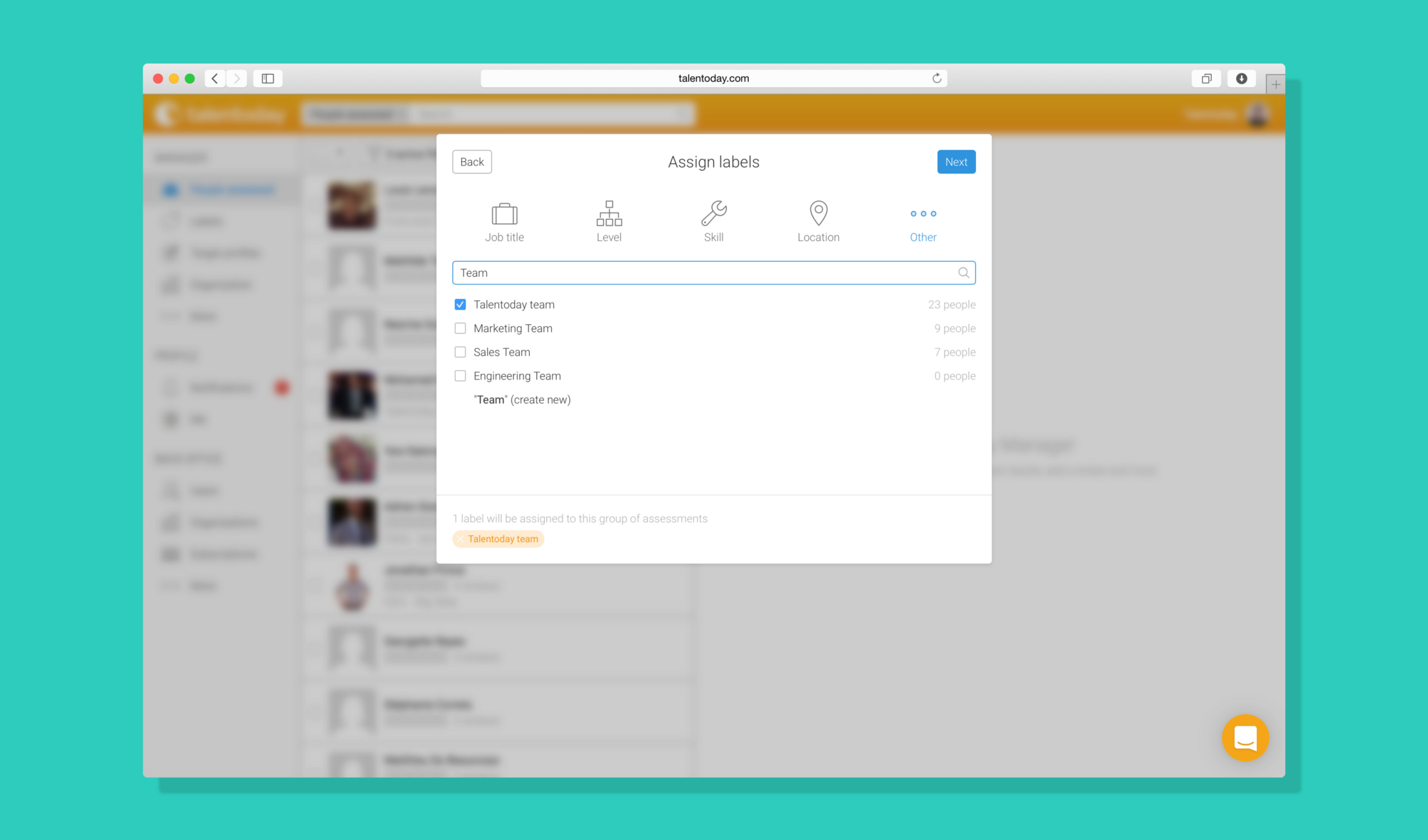
3. Create a Target Profile (in just a few clicks)
Now its time to create a Target Profile so you can match candidates or employees against it. Target Profiles allow companies to see the traits and motivations of a selected group. This can be extremely useful for measuring if someone fits with the company culture, if they fit in a role, or if they mesh with the team dynamic.
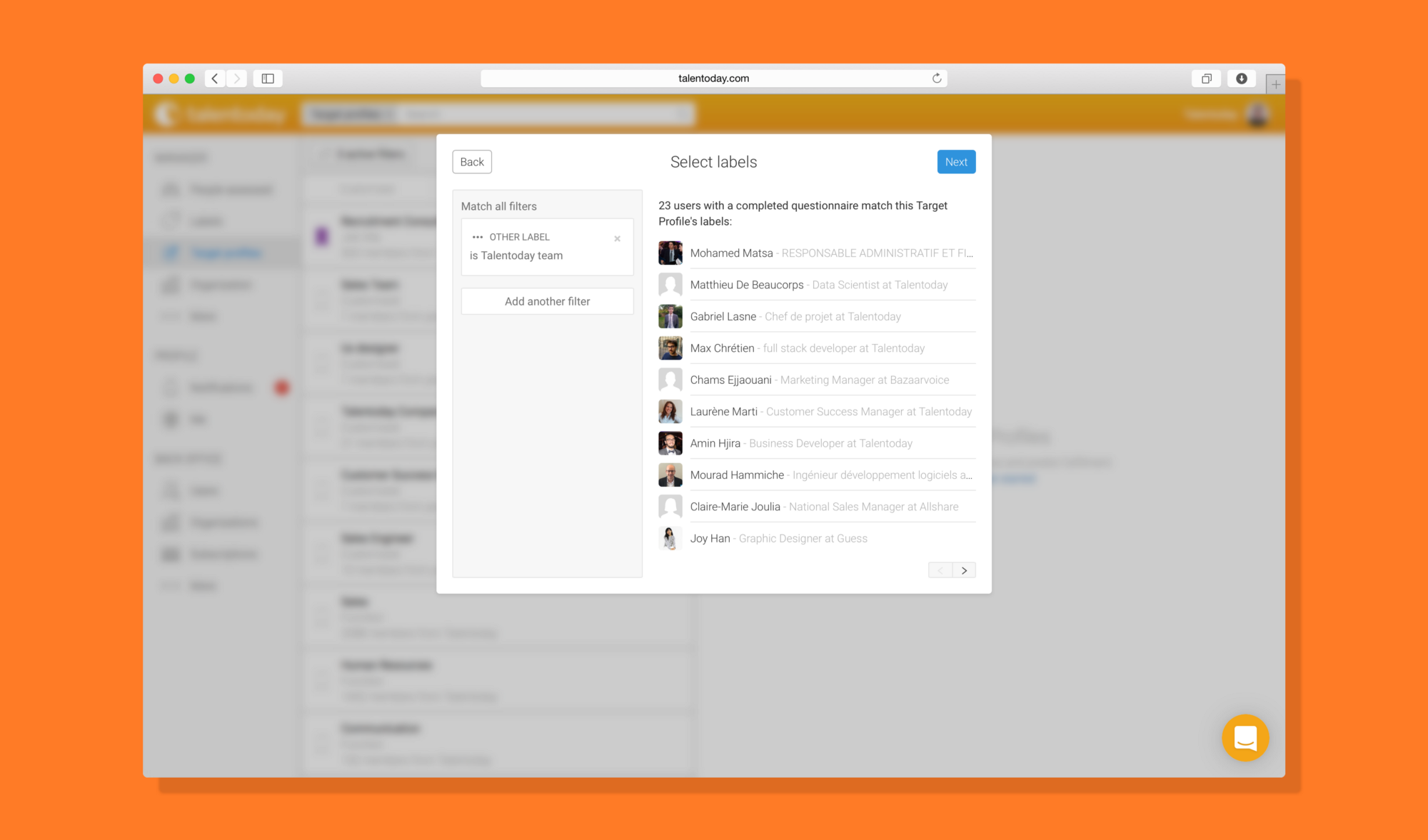
4. Match candidates against the profile:
Matching candidates against a Target Profile is the true essence of Talentobe’s technology. Our matching technology gives you a high level overview of who will excel at your company.
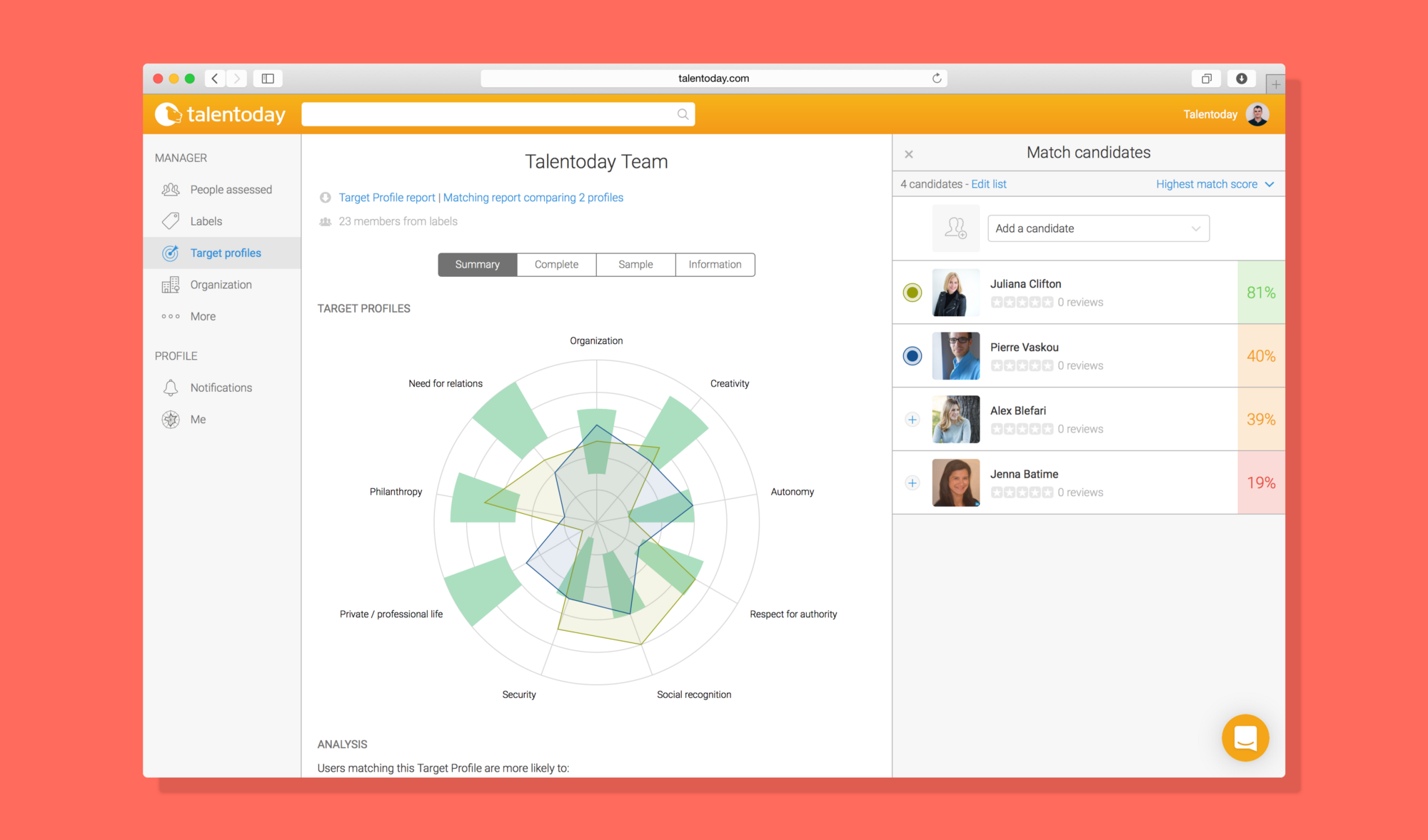
Features built for a quick comparison
Using labels creates a seamless and automatic experience. We understand that time is money, which is why we are always looking for ways to make your processes more efficient.
Suffice to say, this launch is just the beginning of our vision for Talentobe. We’d love to hear what features you think we should consider building next, so drop us a line on Facebook and Twitter.
Curious to find out if your candidates have what it takes? Start your free trial today and test your candidates quickly & effectively for free!
Quick and easy tips for getting ahead of hiring in the new year

As the cyclic trends of hiring goes, there is typically a lull in hiring at the end of the year. Despite the temptation to leave things until next year, this is in fact a critical time to get your ducks in a line for a peak hiring season in January.
With extra time on their hands away from the office, job seekers are going to be on the hunt for their next job. While hunting down candidates is not ideal during the holiday season, ensuring that your job needs are visible online can ensure you have a pile of worthy resumes in your inbox come January 1st.
1. Utilize social media platforms
Social media platforms are for the most part free, easy ways to connect with job seekers. Before you head out for the new year, take time to post something on your company’s LinkedIn stating that you are hiring, or better yet post a link to the careers page on your website with the specific jobs you are hoping to hire in the new year.
Not sure what positions you will be filling or what your numbers will be until year end? You can still use the platforms to build your brand identity. Job seekers, especially millennials, care about the culture of your company and will be looking for that when searching for their next job. Team up with your marketing team to show a little of your company’s unique personality. Better yet, post a personality test that is designed to show employees motivations and help them find the right job, increasing job retention, talk about a win-win! Not only will you be attracting people who care about being in a job where they are happy and inspired (therefore performing best) but you will be showing that you care about them too.
2. Be quick to respond
If you don’t get a flood of applicants through the holiday season or you work for a smaller company, I would consider dedicating a small amount of time bi-weekly during your time off to respond to applicants. It can be a one-lined, quick response with the applicant’s name saying something simple like: “Thank you for your interest in the position, Andrew! I am out of the office until 1/2/2017 but will get back to with what’s next then. Enjoy the New Year!” Reaching out in this way will create a positive first impression with the candidate who is more likely than not applying to several other positions at different companies.
If you work at a larger company where a personal response to each applicant would take a team the entire vacation to respond to, make it a goal to prioritize getting back to the candidates as soon as you get back to the office. Do not worry about filtering through the resumes or the available positions first, or you will not be responding until weeks, maybe months later.
3. Consider using HR analytics in the new year
The new year is the perfect opportunity to pitch your vision for what hiring will look like at your company in the new year. Hiring analytics are becoming increasingly popular and for good reason. Below are a few reasons to jump on the hiring analytic train. Here’s what Forbes thinks about it:
- Analytics serve as trustworthy future-casters (think HR’s crystal ball)
- It increases ROI
- It take out the guesswork
- Hiring becomes more efficient and effective
- Promotes more in-house promotions
- It pays for itself
As you coast into the new year, remember that a little bit of planning for 2017 can have big payoffs. Happy hiring in 2017!
Curious to find out if your candidates have what it takes? Start your free trial today and test your candidates quickly & effectively for free!
Let’s face it, recruiting can be difficult. Let us help. Check out our other posts about hiring trends, tips and tricks.
Magical Beasts and how to hire them.

Hiring for your start up? Become a hiring wizard with this free webinar and these recruiting tips.
If you are an entrepreneur you want nothing short of mystical candidates. Individuals that make something out of nothing and can conjure a lead out of thin air. Whether your company has been around for one month or one hundred years, when you’re expanding into a new market, you have to hire with a start-up mentality. Hiring is an incredible opportunity, but it’s also a risk. As a start-up, you have fewer resources, so if a new hire doesn’t work out, it causes significant burden to the rest of the team. And if you’re managing a new team from a distance, the stakes are even higher. No pressure, but who you hire can make or break your start-up’s success!
If you want to learn all the ins and outs of recruiting for small companies and large companies alike tune into our free webinar on December 14th. Not only will you leave with valuable knowledge on how to assess your candidates soft skills & hard skills but we will also delve into the interview process and how to detect what is beyond the curtain. A professional recruiter give you her insights and you will leave with the tools to play psychologist and truly choose a candidate for the long haul.
But wait there is more..
In the mean time, lets discuss the traits you should look for in a candidate so you can land the perfect person for your company.
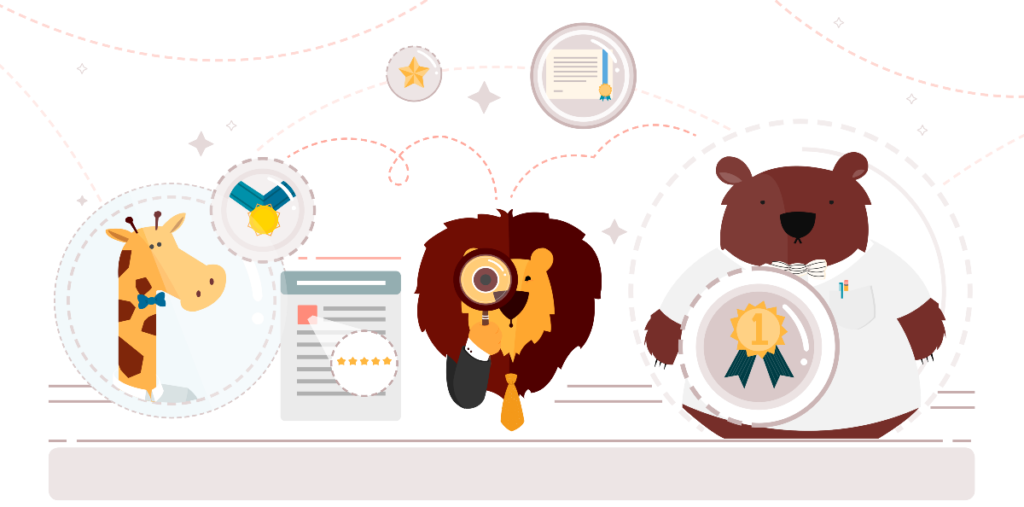
Interviewing is obviously the biggest tool recruiters currently use to find the right fit for a team. Interviewing candidates is an art, both from the interviewer and the interviewee standpoints. Some candidates are great at selling themselves, others more reserved. It could be they grew up in a culture where self-promotion was considered a vice, not a virtue, and not indicative of how well they’d perform in a role. Some recruiters are better than others at bringing out the best in candidates in a conversation.
So how do you know if a candidate will fly or flounder in your company’s entrepreneurial culture? Look for these traits:
- Accountability: Determine how the candidate owns his or her work. Notice if he or she answers questions with “I” or “We”. It’s imperative in a start-up that employees take full responsibility for their roles, tasks and actions.
- Self-motivation: In a start-up you don’t have as much time for rah-rah speeches and trying to light a fire under your team. You need an employee who has an intrinsic desire to work hard and perform well.
- Flexibility: One day the goal might be sales, the next traffic. Mission statements and organization charts evolve quickly. To succeed in a start-up, one must be able to adapt to change.
- Skill/Education: Certainly, having the right skills and education for a role brings results. The closer a candidate matches the expertise you need the less time they’ll need to be trained.
- Passion: Believing in the mission of your company and having a passion for the work you’re doing is key for start-up company employees. It’s what will keep them going in the middle of the night before a big launch.
- Resourceful: An ideal start-up employee knows how to solve problems, often with little resources. Like business Macgyvers, they can make big things happen with Excel and a couple of paper clips.
You don’t have to rely on hours of subjective interviews to figure out if your candidate is “the one.” Identifying a candidate’s personality traits objectively can be done using a people analytics tool like the Talentobe Manager. Here’s an example profile of a real person who is currently successful at a start-up. As you can see, with one glance you can identify areas of strength to match the profile you need.
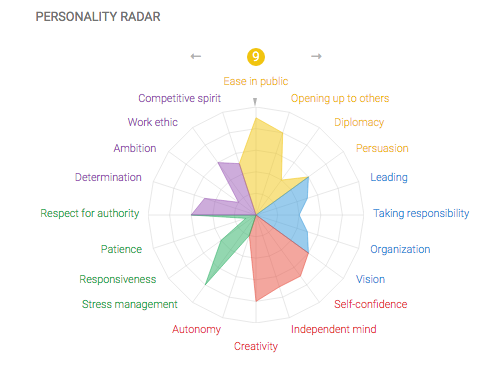
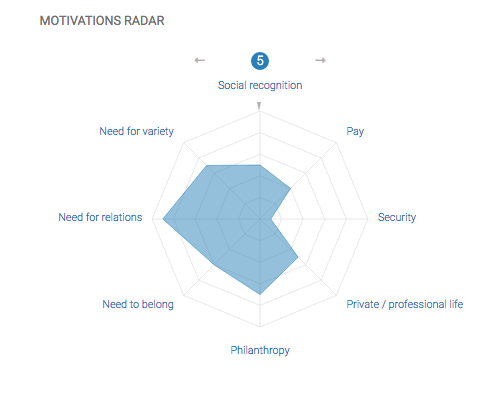
Talentobe further identifies her as a great start-up candidate with these insights:
Creativity 8 / 10: She likes to be innovative and find original solutions. She is not very conventional.
Stress Management 8 / 10: She finds it easy to keep her cool in stressful situations. She performs well under pressure.
Motivations — Security 1 / 10: She does not need security in her work; she likes to take risks.
Motivation — Need for Relations 9 / 10: She is motivated by teamwork and relations with others are very important.
The most important asset a start-up has is its people. When reviewing your candidates, identifying their personality traits is even more important than evaluating their skills. With the right personality traits, an employee can gain experience and move up the ladder, developing into exactly the long-term magical beast you always dreamed of.
Curious to find out if your candidates have what it takes? Start your free trial today and test your candidate quickly & effectively for free!
Let’s face it, recruiting can be difficult. Let us help.
Join our free webinar to get in on the secrets of hiring for your start up



